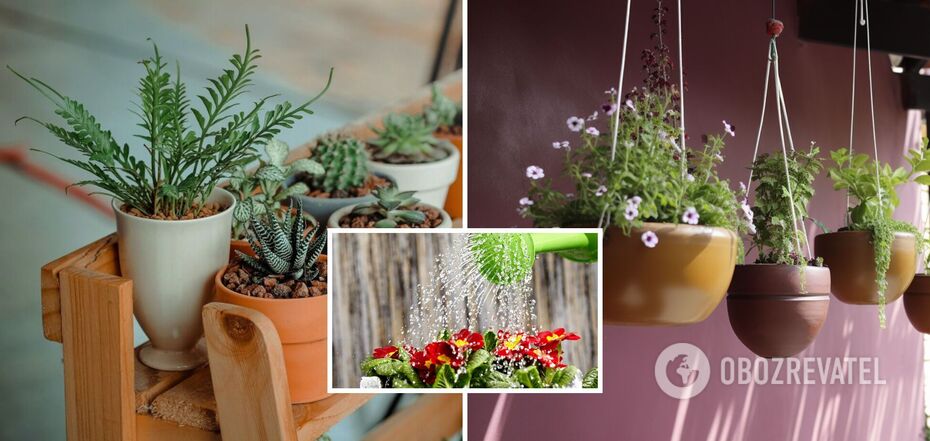Life
From above or below? Which method of watering flowers is most effective
Waterlogging the soil can lead to root rot, therefore, when watering indoor plants, ensure that excess water drains through the holes in drainage pots, tanks, or trays placed underneath. It is crucial to note that different plants absorb water at varying rates.
Experts commonly recommend watering from below as an efficient method to adequately moisten indoor flowers. This technique promotes root growth and helps prevent numerous fungal diseases that may arise from water from above. For additional life hacks, Homes and Gardens has published further information.
The advantages of bottom watering
When practising bottom watering, position the pot or flowerpot within another container filled with water, such as a saucer, bucket, or dish bowl. The soil functions akin to a sponge and absorbs water through capillary action. As a result, not only the top layer but also the underlying layers become adequately moistened.
According to Sean Leyd, an irrigation expert and director of Easy Garden Irrigation, effective watering relies not only on the water volume but also on its "application and absorption in the root zone." He suggests that bottom watering, utilizing capillary action, fosters healthy root development while reducing the risk of foliar diseases by maintaining dry leaves.
However, it is important to note that capillary action may prove less efficient in larger pots or soil with low absorbency.
Watering from above
The disadvantages: Splashing water on the leaves can lead to a number of fungal diseases, including powdery mildew and black spot. Always direct the water to the base of the plant so that it reaches the roots.
However, overhead watering can also be used for plants in outdoor beds and borders in the garden. In this case, it will imitate natural rainfall.
Flowers in very large pots and tropical and broad-leaved plants also need to be watered from above, as the large volume of soil absorbs water much more slowly.
Mark Lane, a well-known garden designer and TV presenter, noted that bottom watering can lead to salt buildup in the soil over time, which is detrimental to plant health. His main advice is to combine both types of watering in a reasonable way. Periodic overhead watering will help to eliminate salt accumulation.
Lane noted that sedum, echeveria, aloe, and calathea are best watered from above, as these plants have shallow roots.
"Cacti can also be watered from above, but instead of using a bottle or watering can, just fill a bucket with water and submerge the entire cactus with the pot. This will allow you to water the plant and also remove dust or debris from the leaves," Lane shared his life hack.
Earlier, OBOZREVATEL provided you with information on what to add to water for watering plants to enhance their growth intensity.
Subscribe to OBOZREVATEL's Telegram and Viber channels to keep up with the latest developments.



























